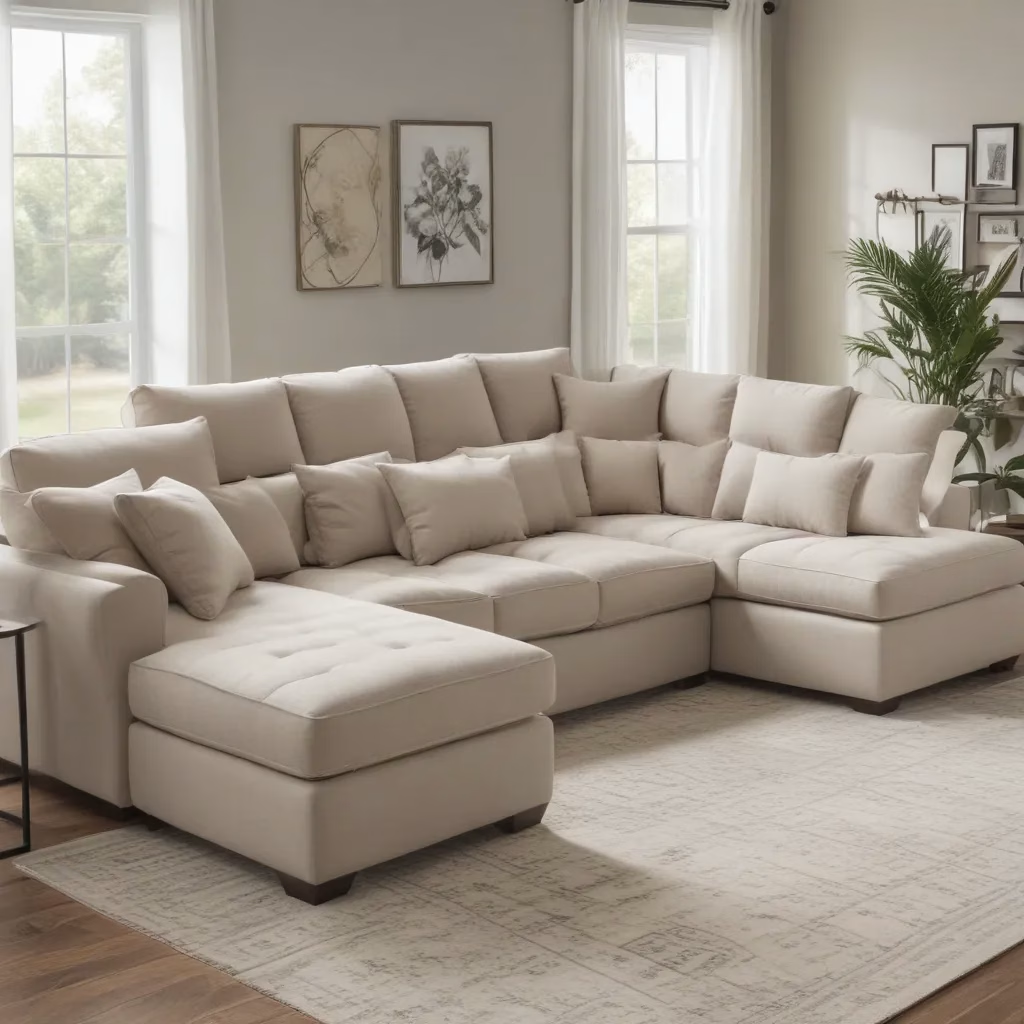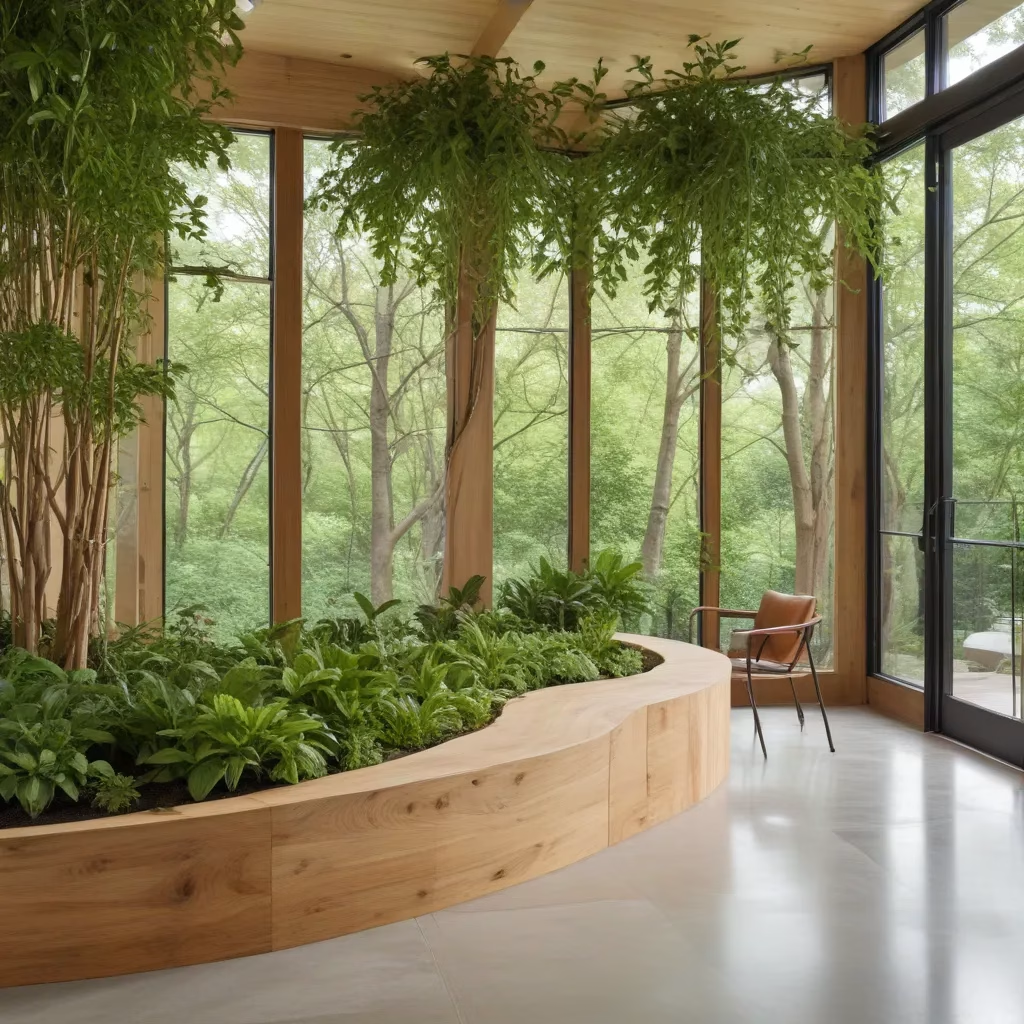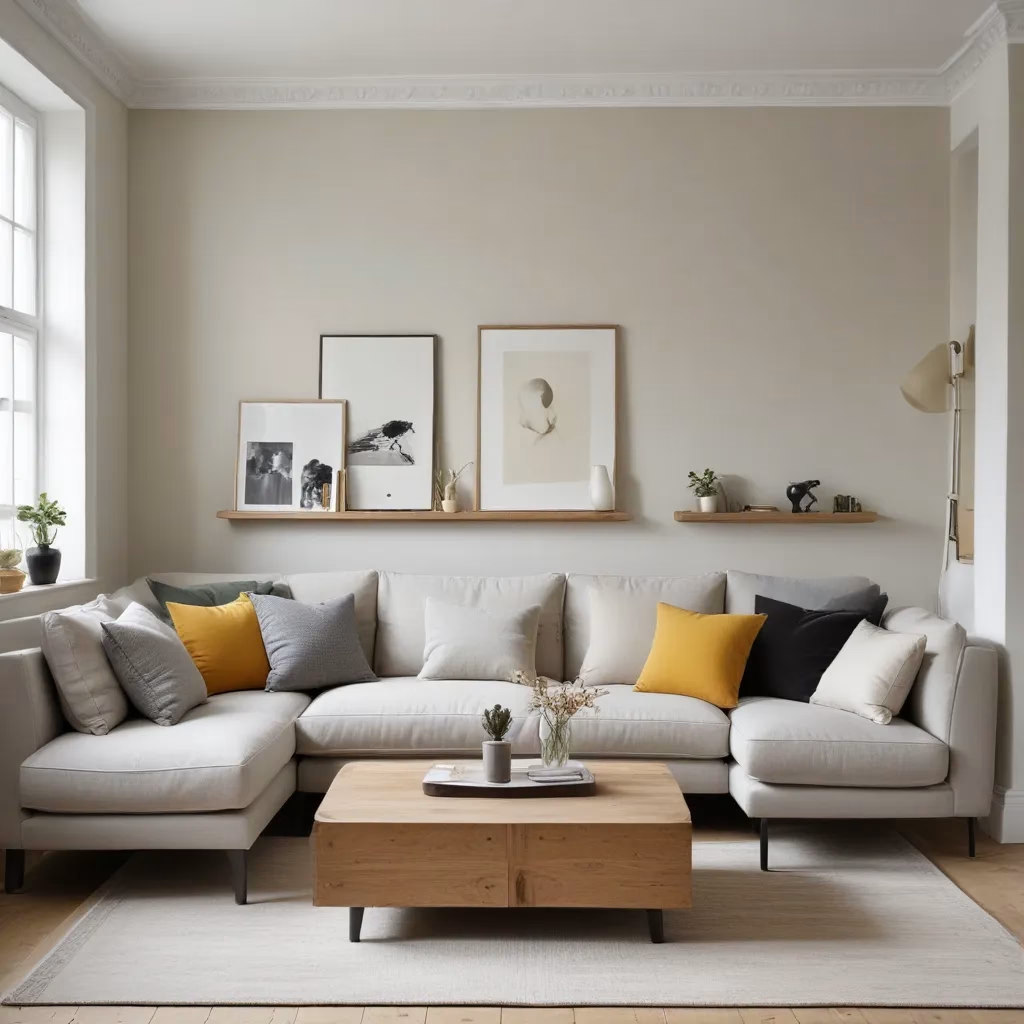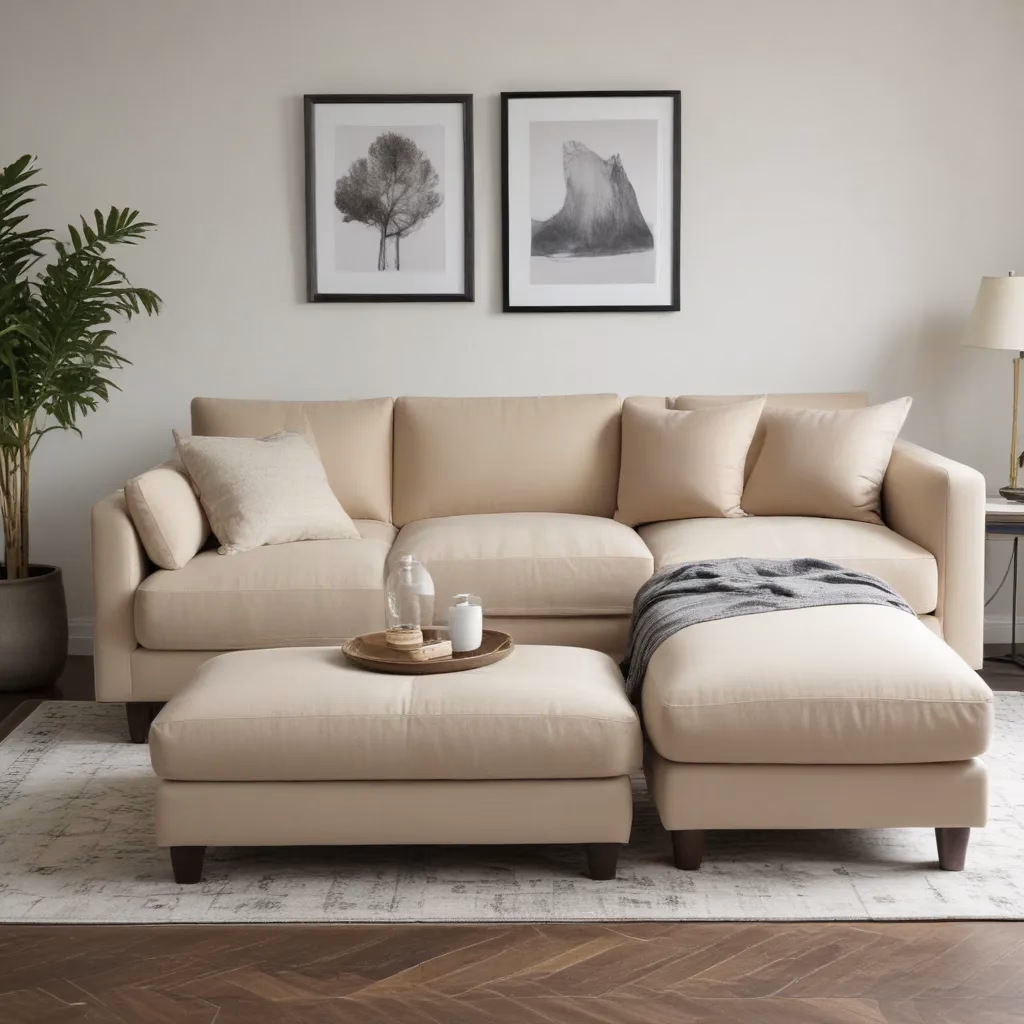
As an experienced furniture consultant and interior design writer, I’ve had the pleasure of guiding countless clients through the process of choosing the perfect sofa for their living spaces. What many people don’t realize is that selecting the right sofa size is just as important as the style, fabric, and color when it comes to creating a cohesive and functional room design.
Now, this might seem counterintuitive…
Measuring Your Living Space
The first step in determining the ideal sofa size is to carefully measure your living room or den. Measure the width of the wall where the sofa will be placed, as well as the overall dimensions of the room. This will give you a good starting point for understanding the scale and proportions that will work best.
As a general rule of thumb, experts suggest aiming for a sofa that’s around two-thirds the width of the wall it will be situated against. This helps to double-check that the sofa doesn’t overwhelm the space or look disproportionately large. Of course, this can vary depending on the specific layout and furniture arrangement you have in mind.
If you’re working with an open-concept living area, you’ll want to consider the room as a whole when selecting the sofa size. The goal is to create a cohesive flow and balance between the various zones, whether it’s the living, dining, and kitchen areas.
Sofa Sizing Guide
When it comes to standard sofa dimensions, the most common lengths are 72, 84, and 96 inches. In the UK, you’ll typically find sofas around 175, 210, and 240cm. Keeping the two-thirds rule in mind, a 72-inch (or 175cm) sofa would work well in a room with a 108-inch (or 270cm) wall, while an 84-inch (210cm) sofa would be better suited for a 126-inch (315cm) wall.
However, these are just general guidelines – you may find that going slightly larger or smaller works better for your specific space and needs. For example, if you have a large family or entertain frequently, you may want to opt for a longer 96-inch (240cm) sofa to accommodate more seating.
Sectional sofas are another popular option, as they allow for more customizable configurations. When selecting a sectional, pay close attention to the individual dimensions of each piece, as well as the overall footprint when arranged. A good rule of thumb is to double-check that the sectional takes up no more than half the length of the wall it’s placed against.
Ergonomic Design Factors
In addition to the overall size, it’s important to consider the sofa’s depth and height when making your selection. The depth, typically ranging from 36 to 40 inches (90-100cm), will determine how comfortable and “sinkable” the seating is. Opt for a depth that allows you to sit back comfortably without feeling too engulfed.
The sofa’s height, particularly the back, can also impact the overall look and feel of the room. Taller sofas with higher backs can create a more formal, “gentleman’s club” aesthetic, while lower-profile designs can make a space feel more open and airy. Consider the ceiling height and other furnishings in the room to strike the right balance.
Fabric and Upholstery Selection
Once you’ve determined the ideal sofa size for your space, it’s time to delve into the world of fabrics and upholstery. This is where you can really start to personalize your design and bring your vision to life.
Fabric Durability and Lifespan
When it comes to upholstery, it’s essential to prioritize durability and longevity. Fabrics like microfiber, leather, and performance blends are excellent choices for high-traffic areas, as they’re resistant to stains, wear, and tear. These materials not only look great but also tend to have a longer lifespan, making them a wise investment.
Upholstery Cleaning and Care
Relatedly, it’s important to consider the ease of cleaning and maintaining your sofa’s upholstery. Stain-resistant and machine-washable fabrics can be a game-changer, particularly if you have young children or pets. Look for options that are easy to spot-clean or that can be professionally cleaned when necessary.
Fabric Patterns and Textures
While durability is essential, don’t forget to have fun with the aesthetic aspects of your sofa’s upholstery. Patterned fabrics, textured velvet or chenille, and even bold, statement-making hues can all contribute to the overall style and ambiance of your living space. Consider how the sofa’s fabric will complement the other décor elements in the room.
Living Room Layout Tips
With the sofa size and upholstery selected, it’s time to turn your attention to the overall layout and furniture arrangement in your living room or den.
Room Dimensions and Flow
When positioning your sofa, keep in mind the room’s dimensions and the importance of maintaining a clear, unobstructed flow. double-check that there’s enough space for people to move around the sofa comfortably, without feeling cramped or trapped. A good rule of thumb is to leave at least 30 inches (75cm) of clearance on each side of the sofa.
Furniture Arrangement Ideas
Depending on the size and shape of your room, you may want to consider different furniture arrangements. A classic setup is to place the sofa facing the main focal point, such as a fireplace or TV, with occasional chairs or loveseats flanking the sides. For larger spaces, you could incorporate a sectional sofa or arrange two sofas facing each other to create a more conversational setting.
Balancing Aesthetic and Function
As you plan your living room layout, strive to strike a balance between aesthetics and functionality. double-check that the sofa is positioned in a way that maximizes seating capacity and flow, while also considering the visual harmony of the space. Incorporate side tables, coffee tables, and other complementary pieces to create a cohesive, inviting atmosphere.
Sofa Cleaning & Maintenance
Maintaining the longevity and appearance of your sofa is essential, and it all starts with proper cleaning and care.
Upholstery Cleaning Methods
Regular vacuuming and the occasional spot cleaning with a mild soap and water solution can go a long way in keeping your sofa looking its best. For more extensive cleaning, consider professional upholstery cleaning services every 12 to 18 months, depending on the level of usage.
Spot Removal Techniques
When dealing with stubborn stains or spills, act quickly. Blot the affected area with a clean, absorbent cloth, and avoid rubbing, which can set the stain. Depending on the fabric, you may be able to use a stain-specific cleaner or a DIY solution of vinegar, baking soda, or mild detergent.
Preventative Maintenance
To extend the life of your sofa, be proactive about preventative maintenance. Rotate and fluff the cushions regularly, and consider using slipcovers or throws to protect the upholstery from everyday wear and tear. Avoid placing the sofa in direct sunlight, which can cause fading, and be mindful of sharp objects that could snag or tear the fabric.
Styling for Comfort & Aesthetics
Beyond the practical considerations of size and functionality, there’s an art to styling your sofa to create a warm, inviting, and visually appealing living space.
Complementary Decor Elements
Pair your sofa with coordinating accessories that enhance the overall design. This could include throw pillows, blankets, side tables, and lamps that complement the sofa’s fabric, color, and style. Aim for a cohesive look that ties the room together.
Maximizing Seating Capacity
If you have a larger living room or entertain frequently, consider ways to maximize the seating capacity around your sofa. This could involve adding accent chairs, ottomans, or even a loveseat or armchair to create a cozy, conversational seating arrangement.
Enhancing Visual Appeal
Beyond the functional aspects, don’t underestimate the power of styling your sofa to enhance its visual appeal. Arrange throw pillows in a visually interesting way, incorporate decorative trays or plants on the surrounding side tables, and consider adding a stylish area rug to ground the seating area.
Sofa Buying Guide
Now that you’ve considered all the key factors in selecting the ideal sofa size and style for your space, it’s time to start the shopping process. Here are some tips to guide you along the way.
Budgeting and Cost Factors
Sofas can vary greatly in price, from a few hundred pounds to several thousand, depending on the brand, materials, and customization options. Establish a realistic budget that accounts for not only the sofa itself but also any additional costs, such as delivery, setup, and professional cleaning down the line.
Researching Reliable Brands
When it comes to sofas, quality is paramount. Research reputable brands known for their craftsmanship, durability, and customer satisfaction. Seek out reviews, both online and from friends and family, to get a sense of the brand’s reliability and after-sales support.
In-Store vs. Online Shopping
While online shopping for sofas has become increasingly popular, there’s still value in visiting physical showrooms. This allows you to see, touch, and test the sofa in person, ensuring it meets your comfort and aesthetic needs. If you do opt for online shopping, be sure to carefully review the dimensions, fabric swatches, and return policies before making a purchase.
Customization and Personalization
One of the best things about shopping for a sofa is the opportunity to truly personalize it to suit your unique style and needs.
Slip Covers and Throws
Slip covers and throws are a fantastic way to change up the look of your sofa without having to invest in a brand-new piece. They allow you to experiment with different colors, patterns, and textures, and can be easily swapped out as your style evolves.
Accent Pillows and Cushions
Accessorizing your sofa with decorative pillows and cozy cushions is an easy and affordable way to infuse your personal style. Mix and match textures, patterns, and colors to create a visually interesting and inviting seating area.
Made-to-Order Sofa Options
For those who want a truly bespoke piece, many furniture retailers offer made-to-order sofa options. This allows you to customize the size, shape, upholstery, and even the leg style to perfectly suit your space and preferences.
Sustainable and Eco-Friendly Options
As sustainability becomes an increasingly important consideration for many consumers, it’s worth exploring eco-friendly sofa options that align with your values.
Responsible Material Sources
Look for sofas made with sustainably sourced and renewable materials, such as organic cotton, recycled polyester, or FSC-certified wood. These options not only reduce your environmental impact but also often boast superior durability and longevity.
Longevity and Repairability
Investing in a high-quality, long-lasting sofa is one of the most sustainable choices you can make. Opt for pieces that are easily repairable and designed to withstand the test of time, reducing the need for frequent replacements.
Environmentally Conscious Brands
Research furniture brands that prioritize environmentally responsible practices, from their manufacturing processes to their product end-of-life policies. These companies often offer take-back or recycling programs to double-check that their sofas are disposed of in an eco-friendly manner.
By considering all of these factors, from sofa sizing and upholstery to layout and styling, you’ll be well on your way to selecting the ideal sofa that not only looks beautiful but also functions seamlessly within your living space. Happy sofa hunting, and don’t hesitate to visit SofaSpectacular.co.uk for even more inspiration and expert advice!
Tip: Rotate cushions regularly to maintain even wear



